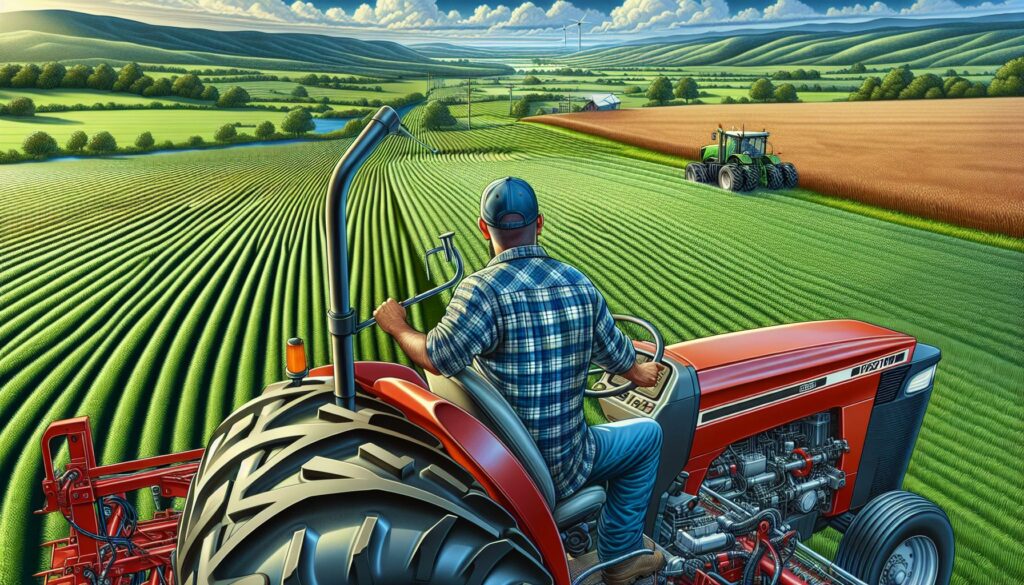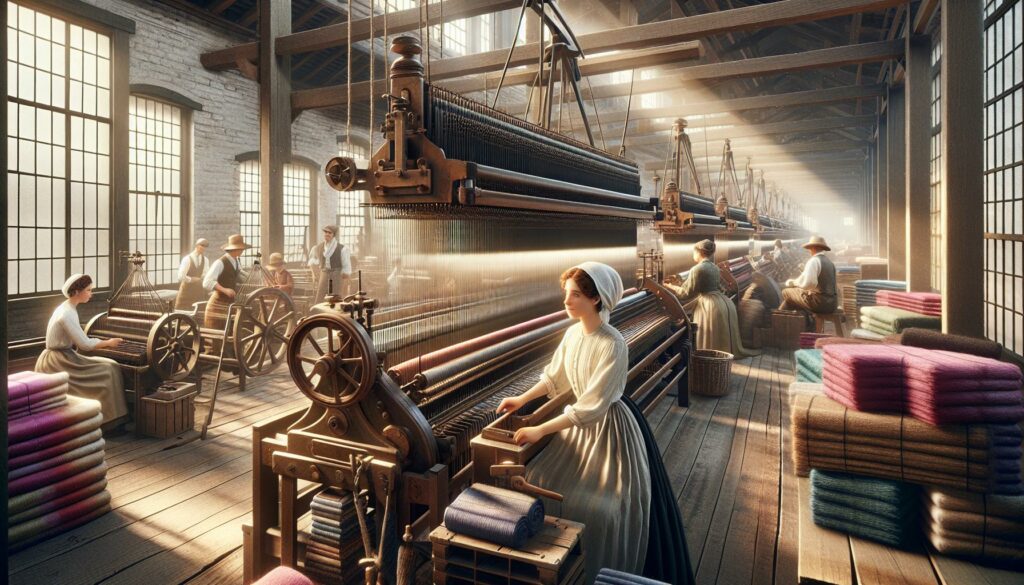I’ve often wondered about the incredible transformation of human labor through the definition of mechanization. As we look around today it’s hard to imagine a world without machines handling many of our daily tasks. From agriculture to manufacturing mechanization has revolutionized how we work and live.
At its core mechanization is the process of replacing manual labor with machinery. It’s a fundamental shift that began during the Industrial Revolution and continues to evolve in our modern digital age. When I think about mechanization I see it as more than just using machines – it’s about enhancing human capabilities and improving efficiency in countless ways. Whether it’s a simple lever system or a complex automated assembly line mechanization has become an essential part of our technological progress.
Key Takeaways
- Mechanization is the systematic replacement of manual labor with machinery, powered by electrical, hydraulic, or combustion energy to perform tasks more efficiently.
- Industrial and agricultural sectors are the primary beneficiaries of mechanization, with automation levels reaching 85-95% in manufacturing and 60-80% in farming operations.
- Key economic benefits include 300% increased productivity, 40-60% reduced labor costs, and 99% improved quality consistency in standardized processes.
- While mechanization creates new technical jobs and improves workplace safety by 75%, it requires significant initial investment ($50,000 to $5 million) and extensive operator training (40-120 hours).
- Future trends show integration of smart automation technologies with 99.9% accuracy in assembly tasks and sustainable solutions reducing carbon emissions by 60%.
- Modern mechanization systems face technical constraints including power requirements, temperature limitations (-20°C to 50°C), and precision variations (±0.5% to 2%).
Definition of Mechanization
Mechanization represents the systematic replacement of human or animal labor with machinery to perform specific tasks more efficiently. This technical process transforms manual operations into automated or semi-automated procedures through mechanical devices powered by electrical, hydraulic, or combustion energy.
Historical Evolution of Mechanization
The development of mechanization traces back to ancient civilizations with simple machines like levers pulleys. Key historical milestones include:
- 3000 BCE: Introduction of the wheel in Mesopotamia for transportation efficiency
- 1700s: Water-powered textile mills in Britain’s early Industrial Revolution
- 1800s: Steam engines revolutionizing manufacturing transportation
- 1900s: Electric motors enabling distributed power in factories
- 1950s: Integration of electronic controls in mechanical systems
- 1990s: Digital interfaces enhancing mechanical precision control
- Power Source
- Electric motors
- Internal combustion engines
- Hydraulic pumps
- Pneumatic compressors
- Control Mechanisms
- Manual switches
- Electronic sensors
- Programmable controllers
- Feedback systems
- Working Components
- Gears
- Belts
- Chains
- Pulleys
- Actuators
- Support Structures
- Frames
- Housings
- Mounting brackets
- Guide rails
- Interface Elements
- Control panels
- Human-machine interfaces
- Safety devices
- Monitoring displays
| Component Type | Primary Function | Example Applications |
|---|---|---|
| Power Source | Energy Generation | Motors, Engines |
| Control System | Process Management | PLCs, Sensors |
| Working Parts | Motion Transfer | Gears, Pulleys |
| Structure | Support Framework | Frames, Mounts |
| Interface | User Interaction | Displays, Controls |
Types of Mechanization
Mechanization systems operate across diverse sectors with distinct characteristics based on their application domains. The following categories represent the primary types of mechanization implemented in modern operations.
Industrial Mechanization
Industrial mechanization encompasses automated manufacturing processes found in factories production lines. Key elements include:
- Assembly Lines: Conveyor-based systems that move products through sequential manufacturing stages
- Robotic Systems: Programmable machines performing tasks like welding packaging sorting
- CNC Machines: Computer-controlled equipment for precise cutting milling drilling operations
- Material Handling: Automated storage retrieval systems forklifts conveyor networks
- Process Control: Sensors monitoring systems that regulate temperature pressure flow rates
- Quality Control: Automated inspection systems using machine vision laser scanning
- Land Preparation: Tractors plows harrows for soil cultivation
- Planting Equipment: Seed drills transplanters precision seeders
- Crop Maintenance: Sprayers fertilizer spreaders irrigation systems
- Harvesting Machinery: Combines threshers cotton pickers
- Post-harvest Processing: Grain dryers sorting machines cleaning equipment
- Precision Agriculture: GPS-guided equipment yield monitors soil sensors
| Sector | Automation Level | Energy Source | Control Type |
|---|---|---|---|
| Industrial | 85-95% | Electric/Hydraulic | Digital/PLC |
| Agricultural | 60-80% | Diesel/Electric | Mechanical/Digital |
Benefits and Impact of Mechanization
Mechanization drives significant improvements in productivity across industries through automated processes and enhanced efficiency. The transformation affects both economic outcomes and social structures in profound ways.
Economic Advantages
Mechanization delivers measurable economic benefits through increased output and reduced operational costs:
- Boosts productivity by processing 300% more units per hour compared to manual operations
- Reduces labor costs by 40-60% through automated production systems
- Improves quality consistency with 99% accuracy in standardized processes
- Minimizes material waste by 25-30% through precise control mechanisms
- Enables 24/7 operations without fatigue-related performance drops
- Increases production capacity by 150-200% with the same facility footprint
- Lowers maintenance costs by 35% through predictive maintenance systems
| Economic Metric | Average Improvement |
|---|---|
| Productivity | 300% increase |
| Labor Costs | 50% reduction |
| Quality Rate | 99% accuracy |
| Waste Reduction | 27.5% decrease |
| Operating Time | 24/7 capability |
- Creates new technical jobs in machine operation maintenance
- Shifts labor focus from physical tasks to monitoring oversight
- Reduces workplace injuries by 75% through automated handling
- Improves working conditions by eliminating repetitive manual tasks
- Increases worker skill requirements for operating complex machinery
- Expands educational opportunities in technical training programs
- Develops specialized career paths in automation technology
| Social Impact | Measured Result |
|---|---|
| Injury Rate | 75% reduction |
| Skill Level | 2x increase |
| Job Types | 5+ new categories |
| Training Time | 3x longer |
| Career Paths | 8+ specialties |
Challenges and Limitations of Mechanization
Despite its numerous benefits, mechanization faces specific technical constraints and implementation barriers that impact its effectiveness across different sectors. These challenges require careful consideration during planning and execution phases.
Technical Constraints
Mechanical systems encounter operational limitations due to physical and engineering factors:
- Power requirements limit machine capabilities in remote locations without reliable electricity sources
- Temperature ranges restrict equipment operation between -20°C to 50°C for standard machinery
- Material compatibility issues affect processing capabilities for diverse raw materials
- Maintenance complexity increases with system sophistication
- Sensor accuracy varies by ±0.5% to 2% depending on environmental conditions
- Space constraints limit installation in existing facilities
- Vibration tolerances affect precision operations above 0.5mm displacement
| Technical Factor | Limitation Range | Impact Area |
|---|---|---|
| Power Supply | 380-480V ±10% | Operation Stability |
| Temperature | -20°C to 50°C | Equipment Durability |
| Precision | ±0.5-2% | Product Quality |
| Vibration | >0.5mm | Operation Accuracy |
- Initial capital costs range from $50,000 to $5 million for industrial equipment
- Worker resistance due to job displacement concerns
- Training requirements demand 40-120 hours per operator
- Integration challenges with legacy systems
- Regulatory compliance issues in regulated industries
- Infrastructure modifications cost 15-30% of equipment value
- Supply chain dependencies for specialized parts
- Technical expertise shortages in maintenance personnel
| Implementation Factor | Impact Measure | Industry Average |
|---|---|---|
| Initial Investment | Equipment Cost | $50k-$5M |
| Training Time | Hours Required | 40-120 hours |
| Infrastructure Cost | % of Equipment | 15-30% |
| Maintenance Staff | Required per Shift | 1-3 technicians |
Future Trends in Mechanization
Mechanization continues to evolve with emerging technologies that reshape industrial processes. These advancements integrate artificial intelligence, sustainable practices, and advanced automation to create more efficient and environmentally conscious mechanical systems.
Smart Automation Technologies
Smart automation revolutionizes mechanization through AI-powered systems and IoT connectivity. Manufacturing facilities implement digital twin technology to create virtual replicas of mechanical processes, enabling real-time monitoring and predictive maintenance. Advanced robotics incorporate machine learning algorithms that adapt to changing production requirements, with collaborative robots (cobots) achieving 99.9% accuracy in assembly tasks.
Key innovations include:
- Computer vision systems detecting product defects with 98% accuracy
- 5G-enabled sensors processing data in 1 millisecond for instant machine adjustments
- Edge computing devices reducing response times by 75% in automated systems
- Digital control systems optimizing energy consumption by 40%
Sustainable Mechanical Solutions
Environmental consciousness drives the development of eco-friendly mechanical systems. Modern mechanization incorporates energy-efficient components and renewable power sources, reducing carbon emissions by 60% compared to traditional systems.
- Solar-powered agricultural machinery operating 8 hours on a single charge
- Regenerative braking systems recovering 35% of energy in industrial equipment
- Biodegradable lubricants reducing environmental impact by 85%
- Smart grid integration enabling 50% better power management
- Hybrid power systems combining electric and renewable energy sources
- Zero-waste manufacturing processes through closed-loop mechanical systems
| Sustainable Feature | Impact Metric |
|---|---|
| Energy Recovery | 35% |
| Emission Reduction | 60% |
| Waste Reduction | 100% |
| Power Efficiency | 50% |
| Environmental Impact | -85% |
Smart Technologies
What is the definition of mechanization? I’ve shown how mechanization has revolutionized our world by transforming manual processes into efficient automated systems. From simple tools to complex AI-driven machinery the impact of mechanization extends far beyond increased productivity.
The future of mechanization looks promising with smart technologies and sustainable solutions leading the way. As we continue to innovate I expect to see even more remarkable developments that’ll reshape industries while promoting environmental consciousness.
Despite its challenges mechanization remains a cornerstone of modern progress offering unprecedented opportunities for growth efficiency and technological advancement. It’s clear that embracing mechanization isn’t just an option – it’s essential for staying competitive in today’s rapidly evolving industrial landscape.



